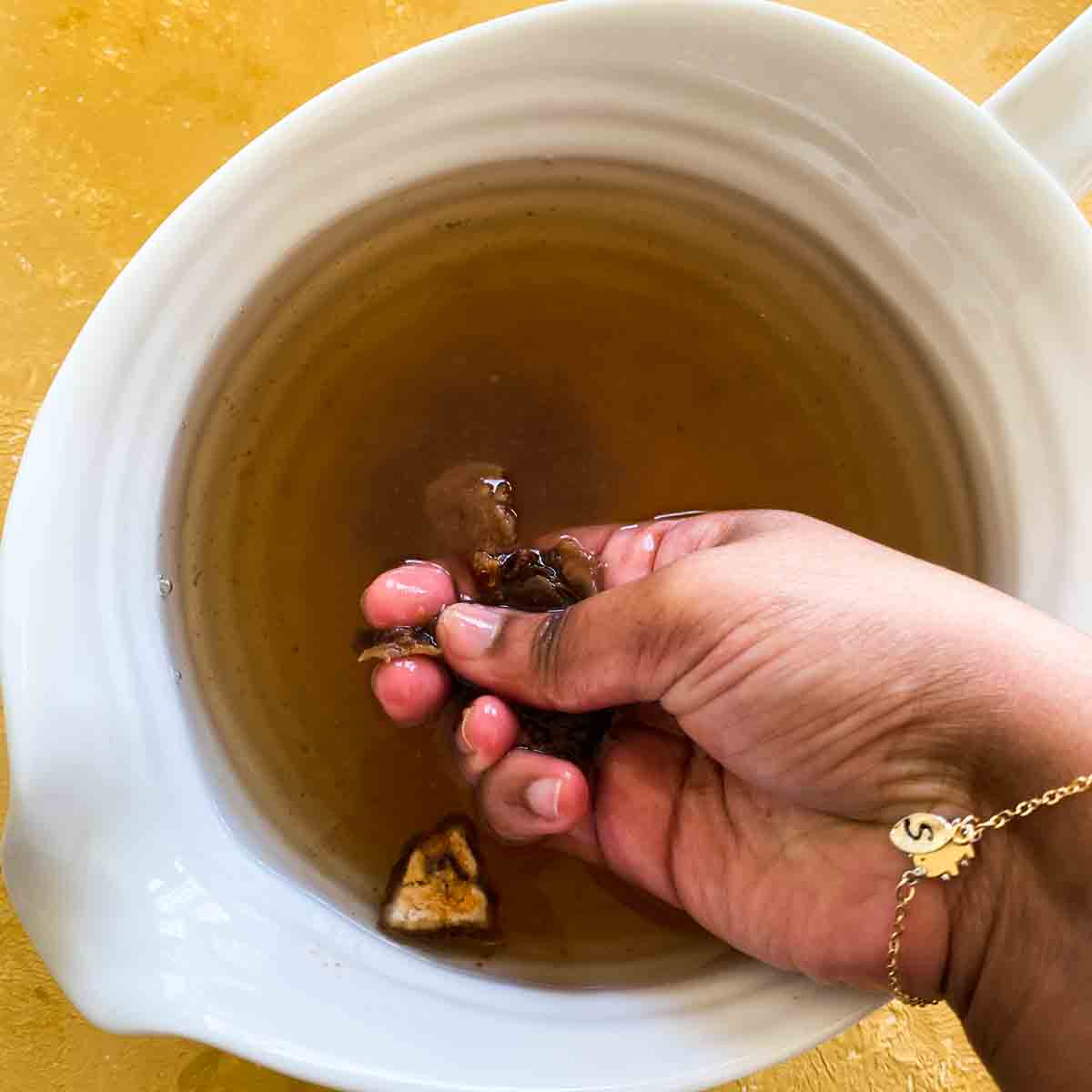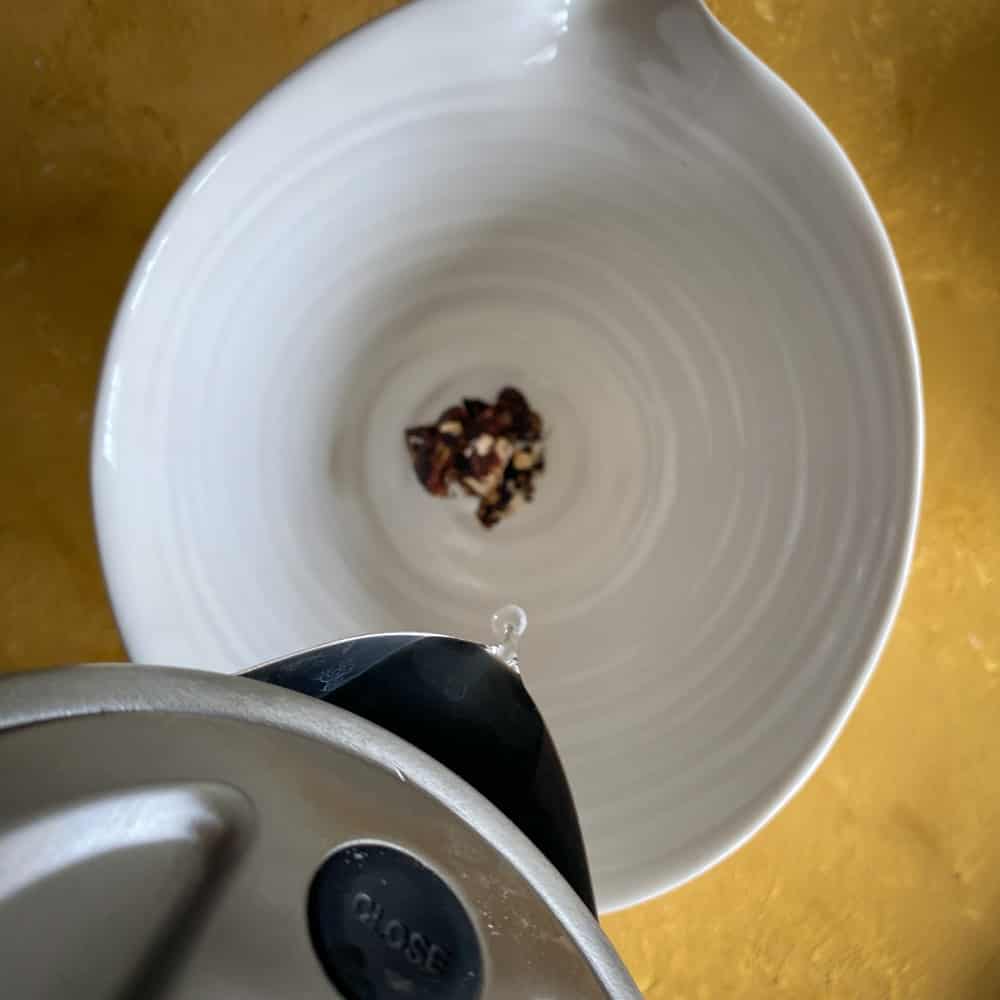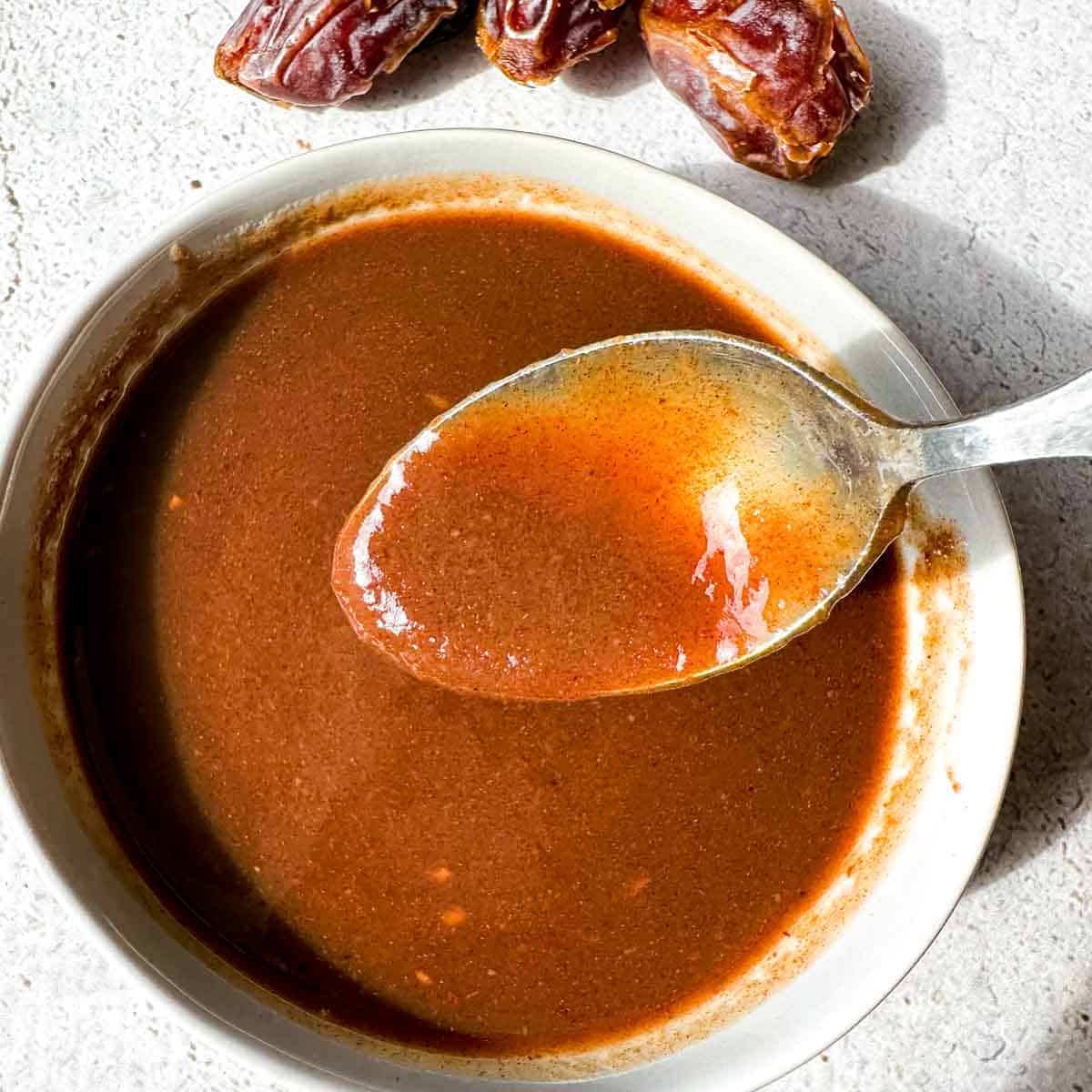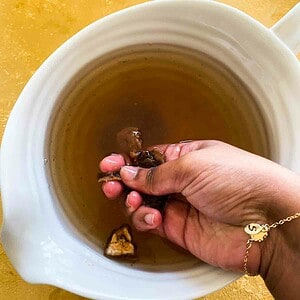When the tamarind is soaked in warm water, it rehydrates the tamarind pulp and makes it soft enough to squeeze. By squeezing the soft flesh, the tamarind flavor is easily infused to the warm water. It is important to strain the tamarind water with a strainer as the fibrous tamarind flesh and the hard tamarind seeds are not pleasant to eat especially when you add them to broth-y recipes like rasam that utilize tamarind water.
What is tamarind pulp and where can I buy it?
Tamarind pulp is the fibrous flesh of the tamarind fruit. Tamarind pulp is usually dehydrated and sold in Indian stores in large blocks. Dehydrating the pulp gives it a really long shelf life, allowing it to stay in your kitchen pantry for a long time. It is so easy to get tamarind these days, even at your local super market, but it will definitely be found at your local Indian store or online.
Tamarind Pulp vs. Paste vs. Concentrate
Tamarind pulp, usually sold in blocks, is dehydrated tamarind flesh that needs to be soaked before use, whereas tamarind paste and concentrate are ready-to-use liquid products that are made from tamarind skins. Tamarind pulp is favored when tamarind is the star ingredient of a dish as it gives a fresh and clean tamarind taste. Tamarind paste and concentrate are often favored as quick substitutes to get the tamarind flavor without having to spend the time it takes to rehydrate tamarind pulp. As for the difference between tamarind paste and concentrate: these products are nearly identical; however, tamarind pastes tend to be thicker than concentrates. Paste and concentrates can be used as substitutes for tamarind as stated below.
Tamarind Substitutes
For tamarind water, you can substitute 1-2 teaspoon of tamarind concentrate or 2 tsps of lemon juice in place of ¼ cup of tamarind water made from a ping pong ball sized tamarind pulp (10g). When using lemon juice as a substitute, make sure to add it towards the end of the cooking process as the sour lemon flavor diminishes with heat.
What can I make with tamarind water?
There are soooo many recipes that utilize tamarind water for the duo of sweet and sour notes. My favorite South Indian dishes on the blog that utilize and highlight tamarind water are definitely rasam and sambar! Rasam is a brothy soup that gets its sourness from the tamarind water, and sambar is a hearty lentil-based soup that gets its acid from this special ingredient. Both of these dishes are satisfying when ladled over rice for a delicious meal. In addition, I love making a thick sweet and sour tamarind date chutney for chaats that utilize the sourness from tamarind.
Tamarind-Date Chutney







